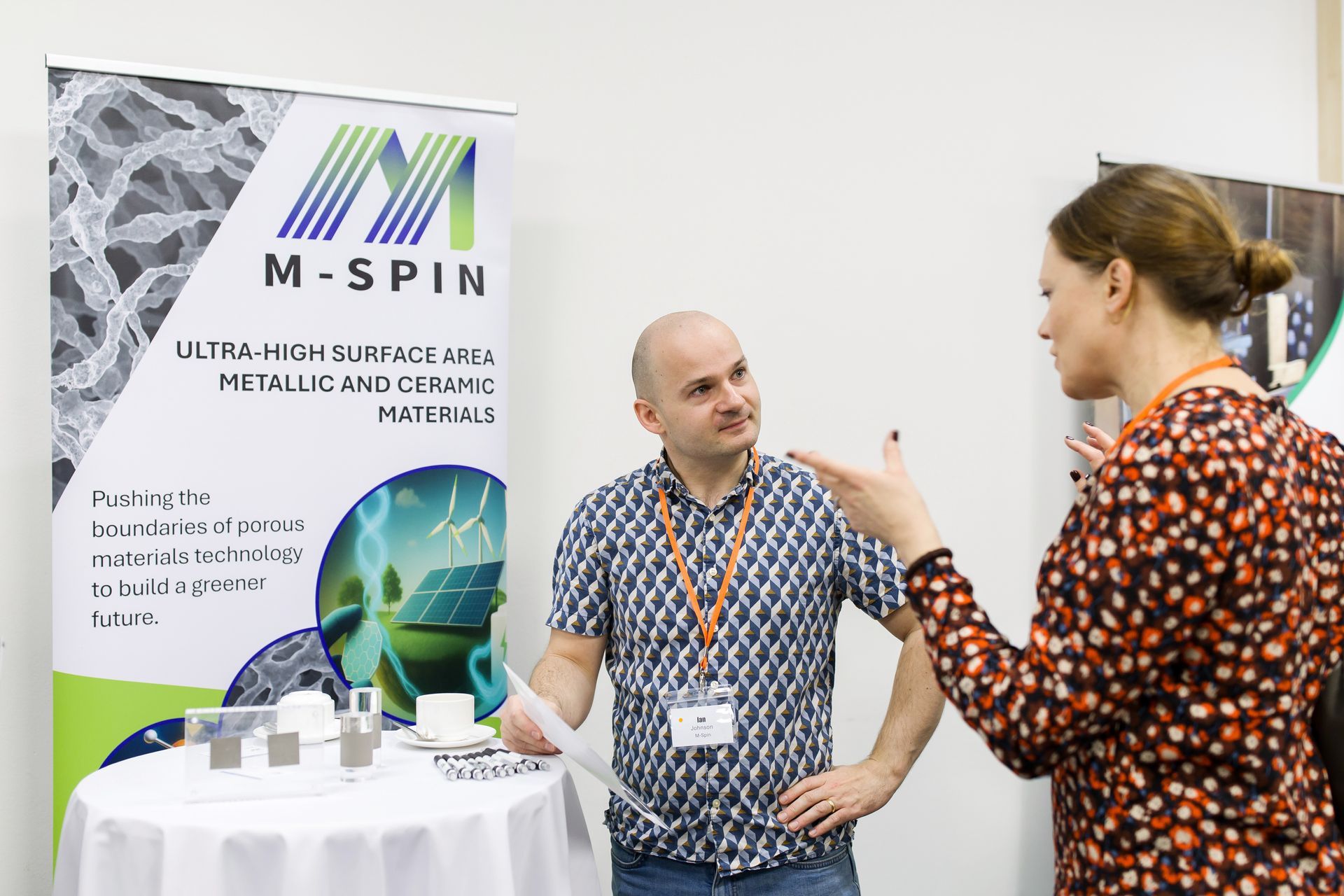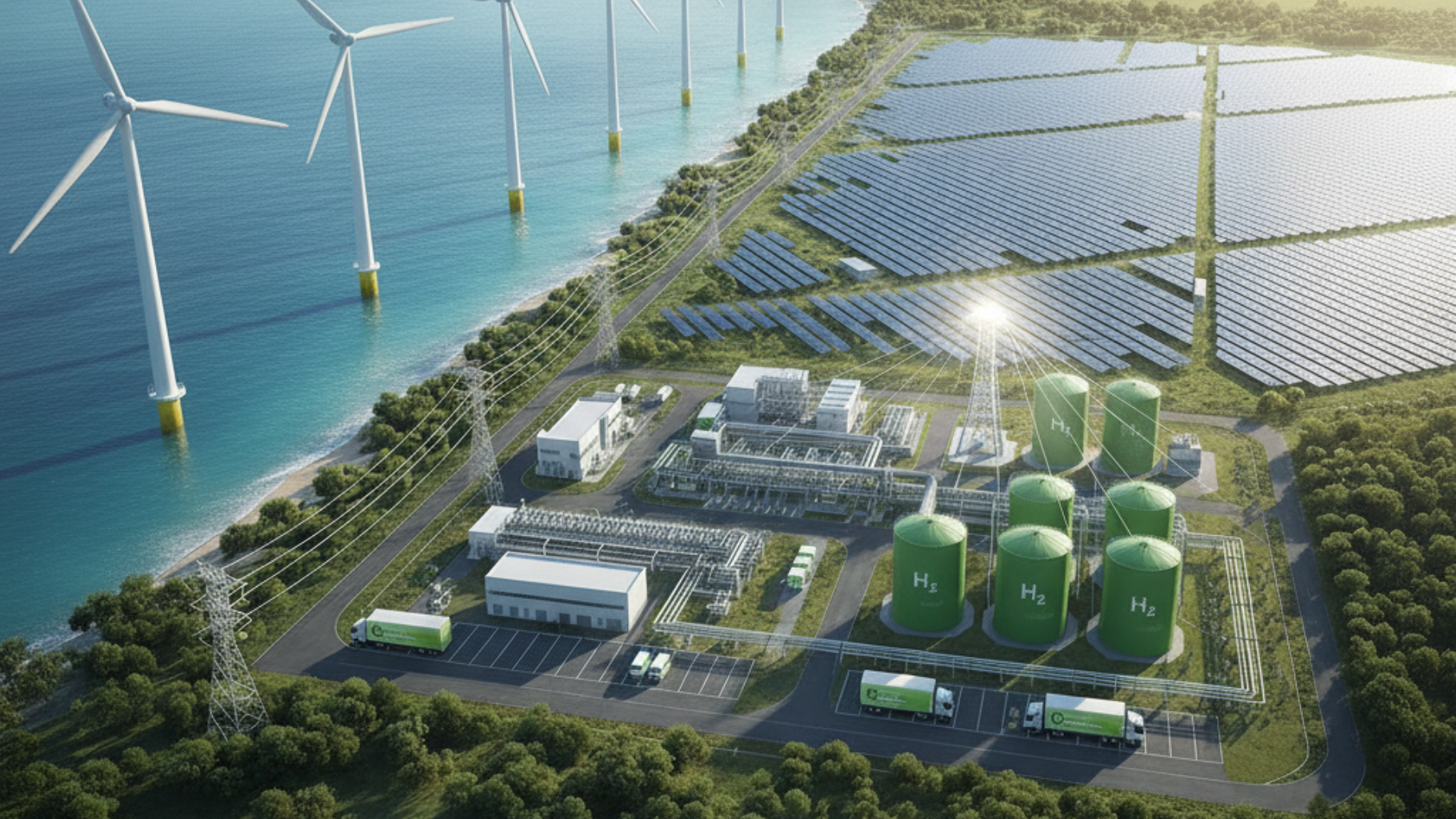BLOG
Welcome to M-Spin's Blog! Dive into the latest on our groundbreaking ultra-high surface area metallic mat technology. Discover updates on our product development, funding milestones, and how our innovative materials are set to transform battery, electrolyser, and catalysis applications. Stay tuned for exciting progress!

The M-Spin team has attended, presented, and exhibited at a lot of industry events recently (a couple of photos are below). A lot, although not all, of these have been hydrogen focussed. So as we come to the end of a turbulent year, we thought it would be interesting to summarise some of the key themes we heard and give some of our perspectives on them. Opinions are my own!

At M-Spin we talk a lot about electrolysis and green hydrogen production - and indeed, this is one of our major focus markets. But electrolysis is far from the only use of M-Spin materials, with one particularly important application being batteries. This article explores how M-Spin materials can be used in batteries, which segments of the battery market are a particularly good fit for our materials, and how the properties of M-Spin materials can drive breakthrough performance in these segments. Batteries – The innovation opportunity From the early days of the portable electronics revolution in the 90’s, to more recent applications in electric vehicles (EVs) and grid storage, rechargeable technologies such as Li-ion batteries have become ubiquitous in modern life. This trend is only going to accelerate with the global shift to an electrified, decarbonised society – batteries are a crucial enabler for renewable energy generation, storing excess energy at peak generation and releasing energy at times of high demand. Indeed, the cost of solar power combined with energy storage is cheaper than coal and nuclear power generation in the sunniest parts of the world, with prices dropping >20% within the past year alone. [1] However, there continues to be a need to make batteries smaller, lighter and cheaper to make, to further accelerate their integration and adoption worldwide and improve the profit margins of cell manufacturers. It’s important to discuss the basic structure of a battery before we can understand how to improve them. Conventional batteries such as Li-ion batteries resemble a lasagne - built from multiple layers of anodes and cathodes (electrodes), which are adhered to current collectors (Cu for anodes and Al for cathodes). The anodes and cathodes are layered between separators (a porous polymer membrane ) and the entire stack is saturated with electrolyte – the “sauce” of the battery that allows lithium to flow through the cell. When the cell is charged or discharged, Li shuttles between the anodes and cathodes, either releasing or storing energy depending on the direction of the flow. The current collectors allow an electric current to flow into the anodes and cathodes. This battery structure can provide power, reversibly, over thousands of charge and discharge cycles. [1] https://ember-energy.org/app/uploads/2025/06/Ember-24-Hour-Solar-Electricity-June-2025-6.pdf

M-Spin produce metallic mats with >1000x the surface area of competing products. But, OK, so what? Why is surface area so important? Why do we make such a big deal about it? This article explores why surface area matters, how M-Spin creates materials with such a high surface area, and how this drives high performance. “God made the bulk; surfaces were invented by the devil” – Wolfgang Pauli Surfaces behave very differently to the inside (or “bulk”) of materials. In the bulk every atom of the material is surrounded (and bonded to) other atoms. However, at the surface the atoms are missing neighbours. Other atoms and molecules can take the place of the missing neighbours, binding to the surface, and undergoing reactions. Chemical reactions with solids always take place at surfaces.
